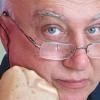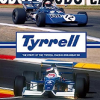Posted 06 November 2003 - 09:37
Here's what I say about the car in my book:
Another brand-new unpainted Formula Two Porsche arrived at Monte Carlo for that Friday's practice. This was the Porsche-Behra, built in Modena, Italy for Jean Behra. It was a prettier and, in its time, more successful car than Porsche's own first open-wheeled effort. But on that day at Monte Carlo neither its assigned driver, Maria-Teresa de Fillipis, nor Edgar Barth could get a clear enough track to set the fast time needed to qualify.
"I like Porsches very much, above all because I had such great successes with them last year," said Behra, explaining why the number one Ferrari team driver would take the trouble to build his own car. "I'd like to try out a few things I've thought up on the basis of my racing experiences in recent years. This project with the Formula Two car is tremendous fun for me!" The basis of his car was a complete RSK Porsche (718-016), obtained on very favorable terms from Ferry Porsche.
Behra brought this RSK to Valerio Colotti, a young engineer who had left Maserati to set up his own design office in Modena at the end of 1958. Following Behra's suggestions, Colotti prepared drawings of the major modifications needed to the chassis and of the new body. The standard 82.6-inch wheelbase was kept. The front torsion bars and their carrying tubes were shortened by about five inches to reduce the front track to 46.9 inches. Rear track was reduced by two inches, to 47.6 inches. The rear suspension remained the original RSK design, with swing axles located by Watt linkages, which were much heavier, bulkier and harder to fit into an open-wheeled auto than the wishbones at the rear of Porsche's own car.
Colotti and Behra gave this improvisation the look of a thoroughbred, with an oil-cooler inlet in a pointed nose, a distinctive sharp peak line ahead of the windscreen, shapely bulges above the engine and screened air inlets in the tail. Its shell was hammered out of aluminum by one of Modena's many artisans and an ex-Maserati mechanic rebuilt the chassis. The workshop of another former Maserati man, Giorgio Neri, was the site of the car's final assembly, which was frantically rushed in order to get the car to Monte Carlo.
The race for Formula Two cars at Pau on May 16th was the one for which Behra had originally been preparing the car. Pau was destined to be one of only two races in which this great French driver personally piloted his Porsche-Behra – as he had named it. He roared into second place, but on that curb-lined course he hit something and blew a tire. In the pits after three laps, he spent a frantic five minutes searching for suitable rubber, then pressed hard to get back in the running. But he pressed too hard. He spun and bent two rims but kept going to place fifth in spite of the delays. Later in the summer Behra drove his blue Porsche-Behra in the Auvergne GP on the Clermont-Ferrand circuit. But he was again without great success. After a poor start he forced the car up to second place but had to call at the pits after 15 laps.
The best outing enjoyed by the rakish-looking car was in the biggest Formula Two race of the year at Rheims on July 5th, 1959. Twenty-three cars started a race that was seen as a preview of the Grand Prix competition coming in 1961. The Porsche-Behra was driven by Hans Herrmann, to whom Behra had said: "You drive it, Hans. You'll get more out of it." This was a tribute both to Behra's remarkable unselfishness and to his judgement, because Herrmann gave the car one hell of a ride. He set practice times faster than the works Porsches and, in broiling heat, fought hard for the lead in the race with Stirling Moss's Cooper-Borgward, finally settling for an honorable second place. Herrmann drove it once more in an F.2 race at Rouen on July 12th, where a seized gearbox forced him to retire after he’d set the fastest practice time.
Already strained, Behra's relationship with Ferrari was not improved by the way the Porsche-Behra easily defeated the latest F.2 car from Maranello at Rheims. Ferrari and Behra parted company after that race and "Jeannot" prepared, impeccably as usual, both his RSK and his single-seater for the German Grand Prix at the Avus in Berlin on August 2nd. When he was killed in the sports-car race there his F.2 car, in which he had practiced, was withdrawn.
Behra’s special was taken over by the American Camoradi team formed by Lloyd "Lucky" Casner and entered for the Argentine Grand Prix on February 7th, 1960. Masten Gregory drove it to 12th among 14 finishers. It was driven in practice for the German GP in July but did not race, and ended the season by placing 10th and last in the Italian Grand Prix. Driven by Fred Gamble, it had been running in eighth as first non-works entry until he ran out of fuel on the circuit and had to run back to his pit for an emergency supply.
After having been owned by a young American, Ray Colet (who loaned it back to Camoradi for the Italian GP) this unique car languished outside the customer service department at Werk I in Zuffenhausen until it was brought to America in 1961 and purchased by Vic Meinhardt of Merrick, Long Island. Meinhardt raced it successfully, winning the SCCA Formula Libre Championship in 1963. He sold it to Dick Souan, from whom it was bought by Philip Sadler late in 1969. A later owner and restorer of the Porsche-Behra was Murray Smith. The blue car still circulates in the burgeoning world of vintage racing.
Looks like I'll have to change that last sentence!
Of course Porsche's own single-seaters are well covered in the book too.




















